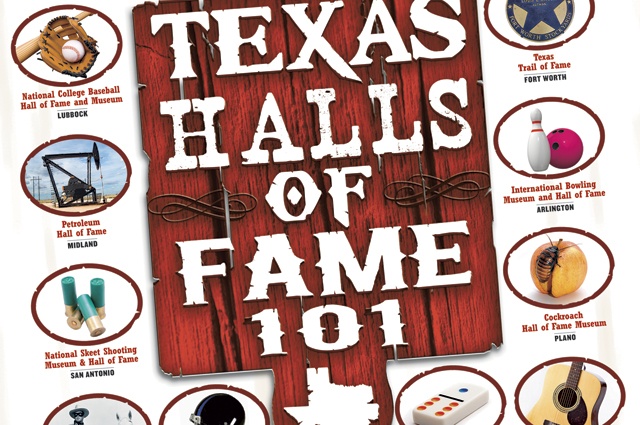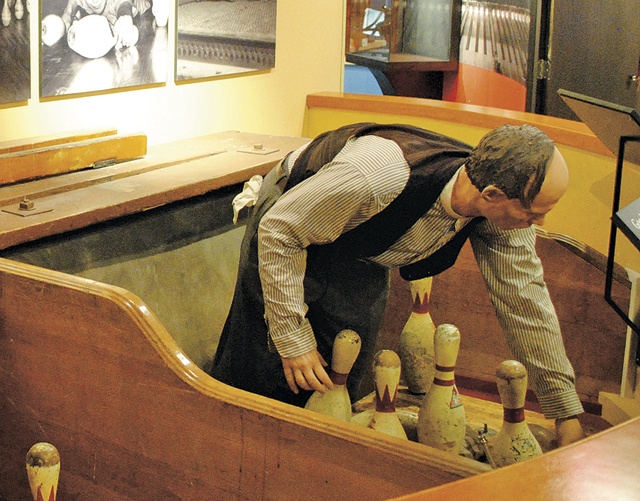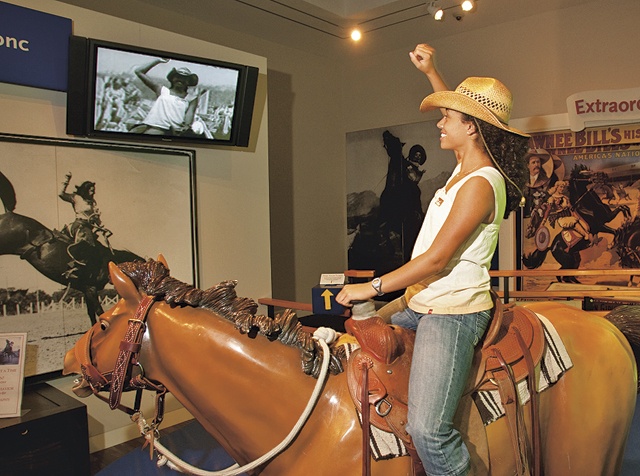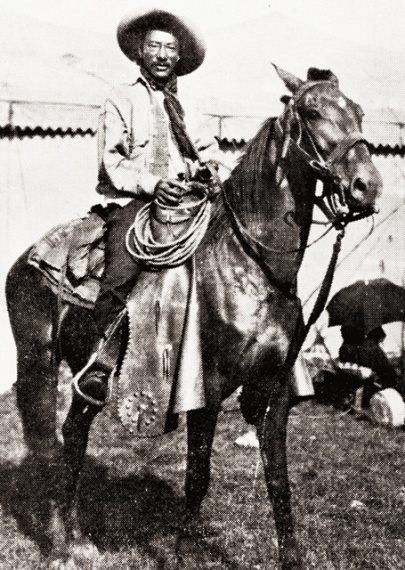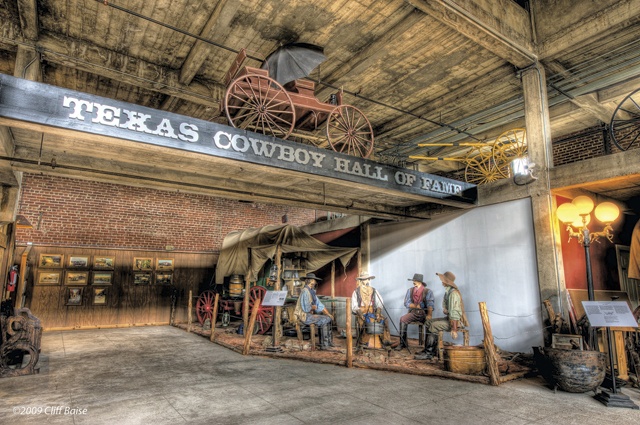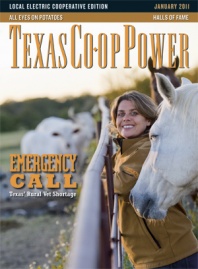Perhaps you dominate at dominoes. Maybe you bowl over the competition, or you’re a hotshot skeet shooter, a cowgirl extraordinaire, a marvelous musician or a heavily decorated Texas Ranger.
That’s all good, but these days, there’s only one way to know if you’ve truly climbed to the top of your field, just one sure way to know if you have really made it: You’re enshrined in a hall of fame.
The term “hall of fame” once only conjured images of famous sports stars, such as baseball great Ted Williams at Cooperstown, or music legend Hank Williams in Nashville’s Country Music Hall of Fame and Museum.
But the phrase “hall of famer” these days could just as likely refer to a massage therapist in Austin or the owner of a fence company in Plano. Didn’t get the news? Sean Eubanks, owner of Texas State Fence Co. and a karate fighter and teacher, was inducted into the Irvine, California-based Martial Arts Hall of Fame in 2008. Oh, and this just in: David Lauterstein, co-founder of Austin’s Lauterstein-Conway Massage Therapy School, will be enshrined into the Massage Therapy Hall of Fame (a “virtual” hall with no permanent home) at an induction ceremony in North Carolina in July.
Suffice to say: There are now halls for the famous—and not so famous— in just about every field you can imagine. Recent issues of The University of Texas at Austin’s alumni magazine highlight inductees to the Texas Film Hall of Fame, the Texas Soccer Hall of Fame, the Texas Sports Hall of Fame, the U.S. Olympic Hall of Fame, the Texas Track & Field Coaches Association Hall of Fame, the American Combat Airman Hall of Fame at the CAF Airpower Museum on the Midland International Airport grounds, and the Bay City/Hilliard Distinguished Alumni Hall of Fame.
All the halls can trace their roots to the nation’s first hall of fame, fittingly called the Hall of Fame for Great Americans, which was founded in 1900 in Bronx, New York. It showcases busts of 98 statesmen, artists and inventors, such as Thomas Jefferson, Walt Whitman and Thomas Edison. But the trend didn’t really take off until 1939 with the opening of the National Baseball Hall of Fame in Cooperstown, New York, which has become the model and remains one of the nation’s most visited halls of fame.
Erecting halls of fame seems our newest pastime, America’s way to honor our most distinguished. “British monarchs bestow knighthoods. France immortalizes its most illustrious citizens in the Panthéon,” wrote the authors of The Volvo Guide to Halls of Fame (Living Planet Press, 1995). “We North Americans honor our heroes in Halls of Fame.”
An Internet search turns up dozens of halls of fame in every corner of Texas: from Alice (Tejano music), to Amarillo (quarter horses and their jockeys, trainers, breeders and owners), to Waco (Texas Rangers and sports stars).
While some halls include impressive museums, engaging interactive displays and extensive archives that will keep history and nostalgia buffs happily occupied for hours, others are thinly supported and may occupy just a small room—or less. For example, just about everything in the Texas State Domino Championship Hall of Fame, which honors some 20 inductees, fits into a single display case at the Knights of Columbus Hall in Hallettsville. (It shares the space with the Fiddlers’ Frolics Hall of Fame, which honors almost 50 fantastic fiddlers.)
Alas, we didn’t have the time to visit all of the halls of fame, so we settled for dropping by a few notable ones. Here’s a sampling of what we found.
Bowled Over in Arlington
Arlington became the kingpin of bowling in January 2010 when the International Bowling Museum and Hall of Fame was relocated here from St. Louis, Missouri. The facility, recognizable by a nearly 23-foot-high white metal pin sculpture, is part of the International Bowling Campus across from Six Flags Over Texas.
Visitors learn about more than 500 of the sport’s biggest names, as well as some oddball facts. For example, did you know that before ancient Egyptians began writing in hieroglyphics or building pyramids they went bowling? Yep. A strangely lifelike mummy explains how bowling dates back to ancient Egypt where players used rocks and stones to represent balls and pins.
You might be bowled over by a diorama about pin boys, youths who manually set pins before automatic pinsetters took over in the early 1950s. Walk up to one pin boy, named Ronnie, and he magically comes to life to tell you his story. There’s also an interactive coaching exhibit where people can view and answer quizzes on computer terminals.
Cowtown Cowgirls
The National Cowgirl Museum and Hall of Fame has come a long way since it was founded in the basement of a library in Hereford in 1975. Today, the shrine occupies a sparkling facility in Fort Worth’s cultural district.
Honorees are selected in five categories: artists-writers, rodeo performers-champions, ranchers (stewards of the land and livestock), pioneers-trailblazers and entertainers. Alternating exhibits give visitors peeks at the fascinating lives of the nearly 200 honorees. One of last year’s biggest draws was an exhibit about Georgia O’Keeffe, whose art was inspired by Western landscapes.
Among other inductees: Country Music Hall of Famer Patsy Cline, Little House on the Prairie author Laura Ingalls Wilder, former Supreme Court justice Sandra Day O’Connor (who grew up on an Arizona cattle ranch), and Phoebe Ann Moses Butler, better known as sharpshooter Annie Oakley, the only female performer in Buffalo Bill’s Wild West Show.
Forgotten Cowboys
In a working-class Fort Worth neighborhood is the National Multicultural Western Heritage Museum and Hall of Fame, which tells the story of the forgotten cowboys of Hispanic, Native American, African American and European American descent. Until October 2009, it was known as the National Cowboys of Color Museum and Hall of Fame.
Some of the prominent names include country singer Charley Pride; one-time Texas Poet Laureate and multicultural advocate Red Steagall; Herb “The Bronze Buckaroo” Jeffries, a singer in the Duke Ellington Band; and Bill Pickett, known as the father of bulldogging.
You could spend hours viewing the displays, which show how the inductees lived (or live), what they wore (impressive belt buckles) and sat on (check out the saddles of world calf roping champion Fred Whitfield and rodeo legend Charles Sampson).
Fort Worth Stockyards
If you haven’t had your fill of Western shrines, mosey over to the Fort Worth Stockyards National Historic District where you will find more: the Texas Cowboy Hall of Fame, the Texas Rodeo Cowboy Hall of Fame and what local boosters have named the Texas Trail of Fame, which is Texas’ country cousin to the Hollywood Walk of Fame.
But instead of Barbra Streisand and Cary Grant, you’ll find sidewalks paying tribute (with bronze stars set in concrete) to Western greats such as Clayton Moore (The Lone Ranger), Jay Silverheels (Tonto), and entertainers Ernest Tubb and Will Rogers.
Keep Plano Weird: the Cockroach Hall of Fame
You’ll find what is arguably Texas’ weirdest hall of fame in a suburban strip mall between a computer repair shop and a women’s lingerie store. Right here, at 2231-B W. 15th St. west of downtown Plano, is the Cockroach Hall of Fame Museum, home of such stars as Elvis Roachly, Liberoachi, Ross Peroach and Marilyn Monroach.
Michael Bohdan, a pest control expert and business promoter, founded his roach gallery in 1988 after traveling the country to locate contestants for Combat Roach Control’s ”best-dressed” cockroach contest.
“Once the promotion was done, they were going to throw them away,” Bohdan says. “I said ‘you can’t do that’ so I created the museum.”
The cockroach shrine is housed in seven glass display cases in the front of Bohdan’s pest control business, The Pest Shop. “I’m a pest control specialist in the morning, and in the afternoon I’m the curator of the museum and hall of fame,” says Bohdan, who estimates his museum gets 7,000 visitors a year.
——————–
Mark Miller is a freelance writer in Flower Mound and a member of CoServ Electric. Charles Boisseau is a writer living in Austin.
